I am hard on paper shredders. I’ve destroyed two of them in the past year. I like to think it’s just because those diamond-cut shredders are flimsy, but I suspect it’s really because I push the limits a little too often. In any case, I recently cleaned out the shed and found I had three boxes full of old financial docs, dating back twenty years. That’s way longer than I need, and is perhaps even becoming a liability. But…I don’t have a shredder.
My wife suggested I look up other ways of destroying documents, so I did. I don’t think a burn-barrel would go over too well these days, but a soak barrel sounded interesting. The idea is to get a bucket of water and dump your documents in there, let them soak, then stir them well to break them up and turn them to pulp. Then you pour the pulp out somewhere and let the water drain/soak/evaporate out of it until it hardens up. You can then pick it up and put it in the garbage, and no one will really be able to get any info out of the mess.
So I tried it. I immediately got it wrong. I started by filling two five gallon buckets with papers. Then I filled them with water.
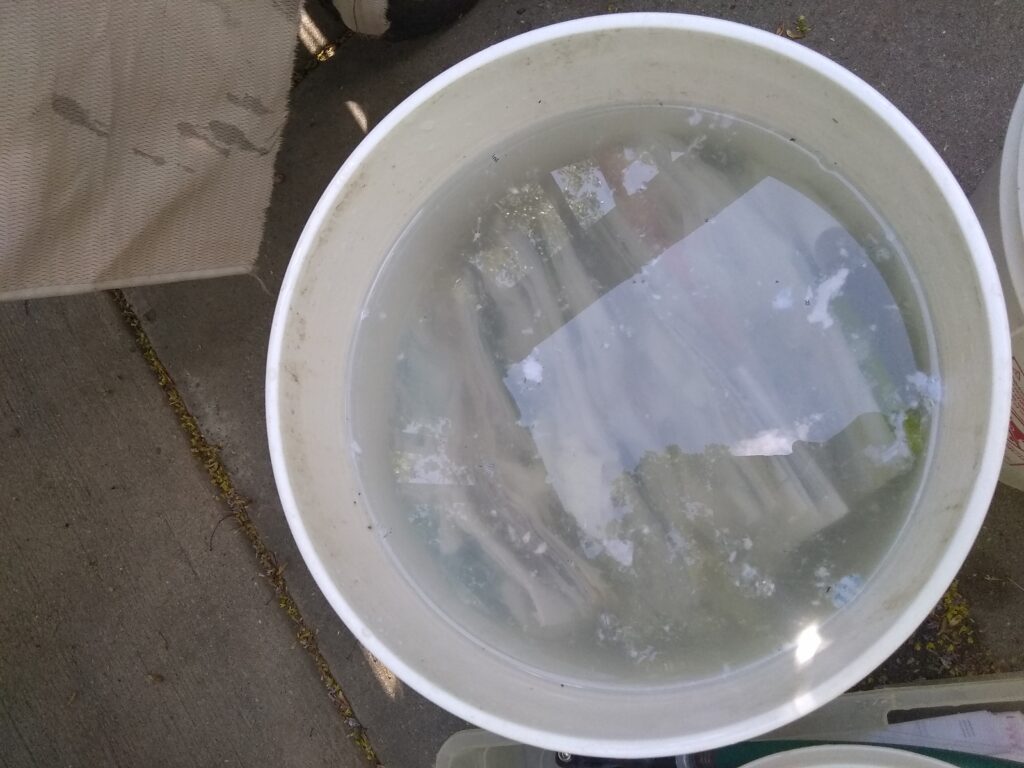
Do you ever cook spaghetti only to have the noodles all clump together tightly and not want to separate? Paper is much, much worse. I should have separated them more, or better yet filled the bucket with water first, then put the documents in, page by page until it was maybe half full. The first time I went to stir them they all stuck together in a single mass that wouldn’t budge, let alone break up. Even my hand tiller tool, used for breaking up garden soil, wouldn’t work.
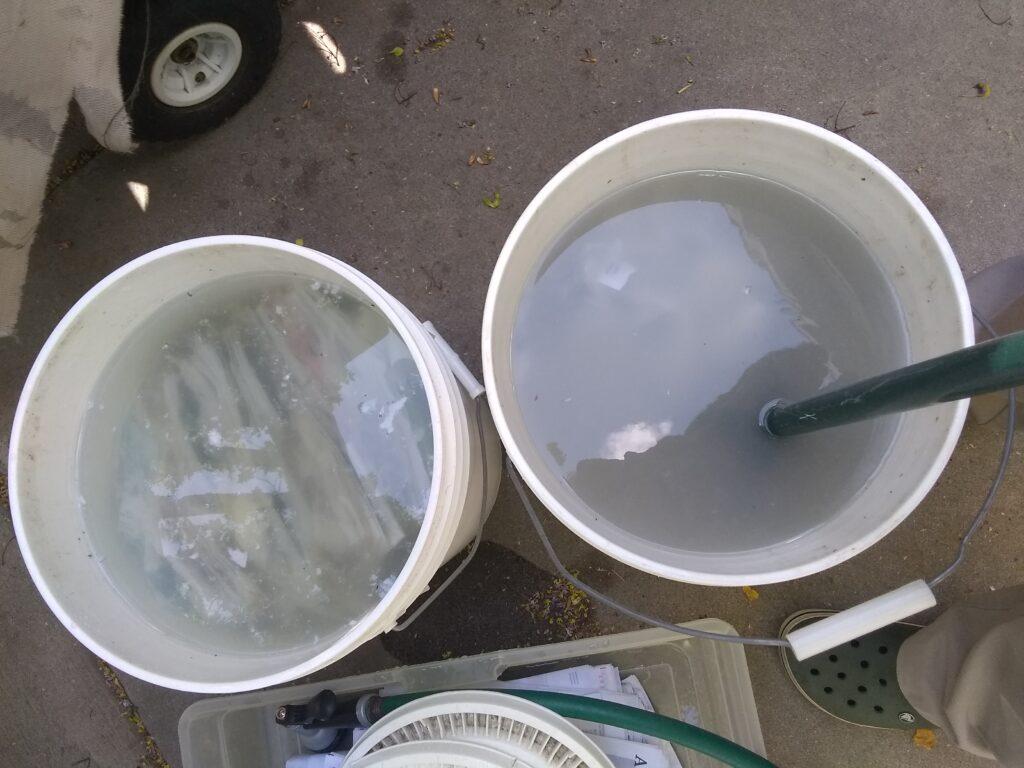
It became a battle of wills. I’d go outside once or twice every day, replace any evaporated or soaked-in water, and stir/till each bucket, slowly scraping bits and pieces of paper from the clumps. Over about a week it began to look more promising.
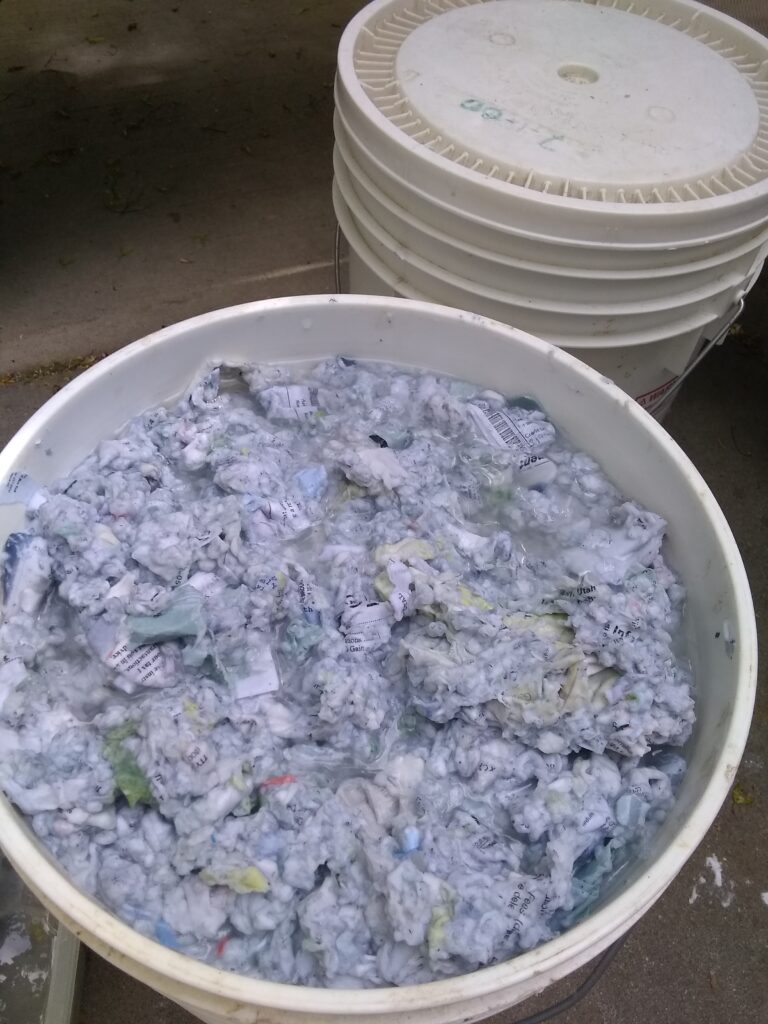
Finally I could wait no longer, and dumped out the two buckets on a tarp I set up and spread the pulp out to dry. That didn’t go quickly, either, as we have very few sunny places in our yard. It probably took another week of drying.
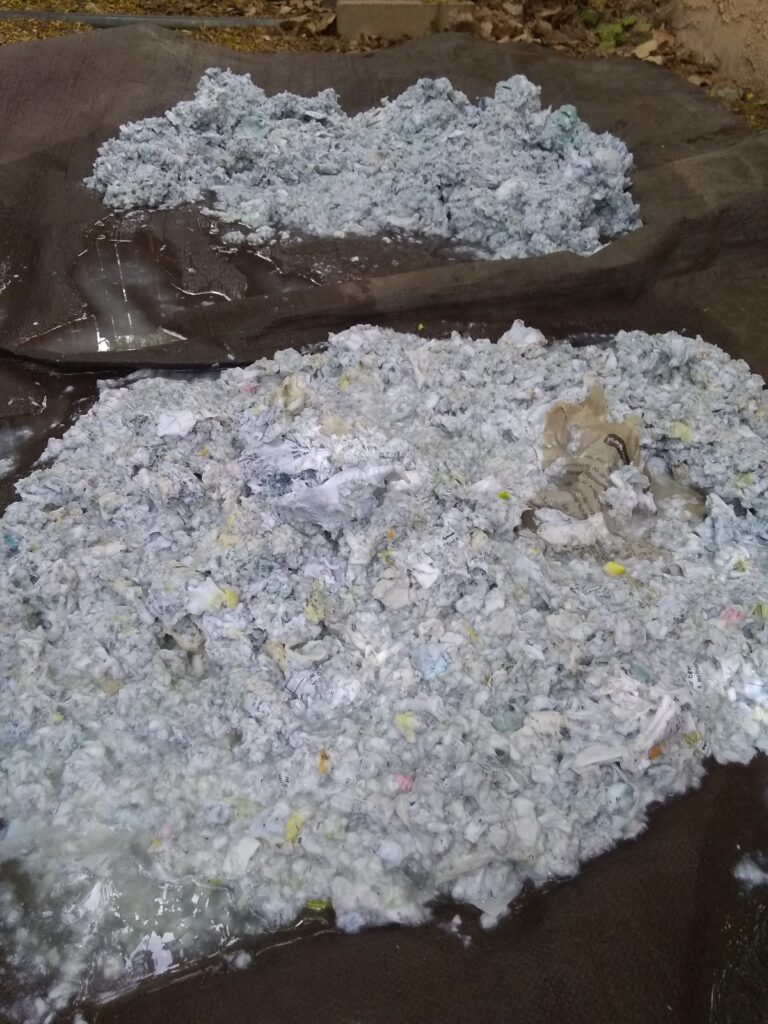
Eventually it dried enough to make an interesting piece of art. My wife joked about using them for floor mats, or table placemats, or finding a way to roll it out thinner and making our own recycled paper. Frankly, I don’t think there’s much worth doing with it other than throwing it away.
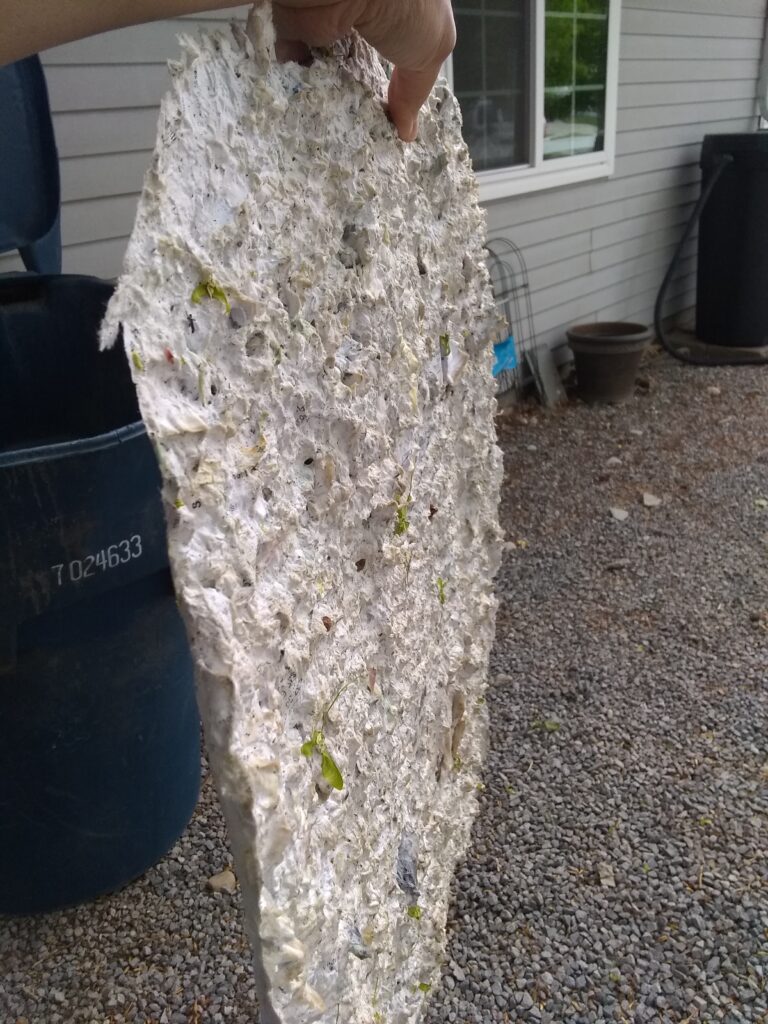
I really don’t see much to recommend this particular approach to document destruction. At this rate I’ll have my documents destroyed around about….October. It’s cheap, and it may even be less labor-intensive than sitting there for hours feeding a few pages at a time through a shredder. It’s certainly cheaper than a new shredder. What I really ought to do is get a good document scanner and a good shredder, scan the documents as soon as I get them and shred them on the spot. But I’m a cheapskate, so that probably won’t happen. But I also won’t pay to have the local UPS Store dispose of them for me, either, so who knows. Maybe the pulp-pots will remain in business?
I’ll probably try another batch with an entirely different approach and see how that goes, but at least by the time I’ve done that it should be easier to justify shelling out more for a good, industrial-strength shredder.
